Embarking on the iconic Everest Base Camp Trek is a thrilling adventure that challenges both the body and the mind. Over the course of 10 captivating days, trekkers will navigate through diverse landscapes, enjoy vibrant Sherpa and Tibetan cultures, and ultimately set eyes upon the majestic Himalayan peaks. While the trek demands a moderate to strenuous fitness level, the rewards of this journey are unparalleled. As trekkers acclimatize to the high altitudes, they’ll uncover a world of natural wonders and cultural treasures that few have the privilege to witness. With the right preparation and guidance, this life-changing expedition awaits those seeking to push their limits and create unforgettable memories.
This experience made our list of the 8 Best Hiking And Trekking Tours In Namche Bazar.
Key Points
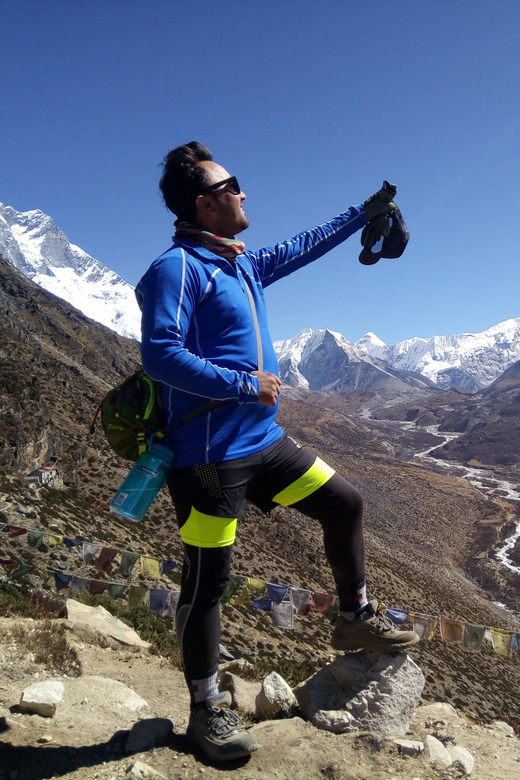
- The Everest Base Camp trek is a 10-day journey that covers over 13,120 feet (4,000 meters) of elevation gain, requiring a moderate to strenuous fitness level.
- Trekkers will experience breathtaking Himalayan scenery, including snow-capped peaks, glaciers, and valleys, while seeing Sherpa and Tibetan cultural encounters.
- The trek includes acclimatization stops in Namche Bazaar and Dingboche to prevent altitude sickness, with a maximum altitude of 18,192 feet (5,545 meters) at Kala Patthar.
- Trekkers will be provided with essential gear, such as high-quality sleeping bags and jackets, as well as medical support and emergency evacuation assistance.
- The trek package includes domestic flights, trekking permits, and meals featuring Nepali and Tibetan cuisine, but excludes international airfare, travel insurance, and personal expenses.
Trek Difficulty and Elevation Gain

The Everest Base Camp trek is a high-altitude adventure that demands a moderate to strenuous level of fitness.
Over the 10-day journey, trekkers will gain over 13,120 feet (4,000 meters) in elevation, reaching a maximum height of 18,192 feet (5,545 meters) at Kala Patthar.
The terrain is challenging, featuring steep ascents, rocky paths, and suspension bridges. Proper acclimatization is crucial to prevent altitude sickness.
Trekkers can expect to hike 4-6 hours per day, covering distances up to 10 miles (16 km).
While strenuous, the trek offers breathtaking landscapes, culture, and the unforgettable experience of reaching Everest Base Camp.
Ready to hit more trails? More hiking adventures we feature in Namche Bazar
Scenic Highlights and Cultural Encounters
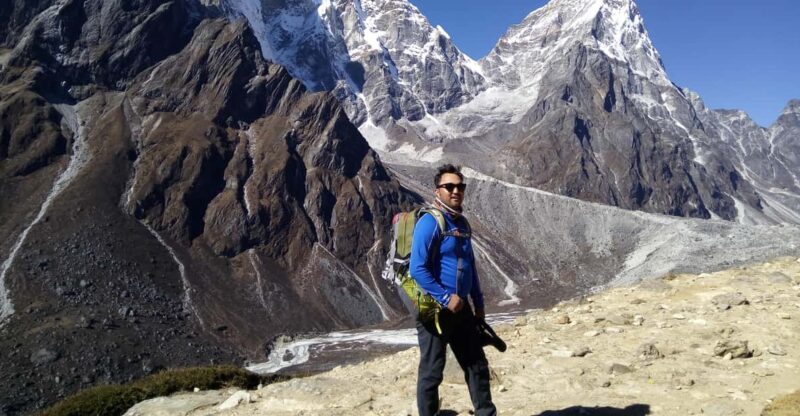
As trekkers ascend the rugged terrain, they’ll be rewarded with breathtaking scenery that epitomizes the Himalayas.
The trek offers stunning vistas of snow-capped peaks, pristine glaciers, and serene valleys. Along the way, they’ll encounter Sherpa and Tibetan communities, providing a glimpse into the region’s rich cultural heritage.
Trekkers can explore colorful marketplaces, visit ancient monasteries, and engage with locals, fostering a deeper understanding of the Himalayan way of life.
From traversing suspension bridges to reaching the iconic Everest Base Camp, this journey offers a transformative experience that blends natural beauty with culture.
Itinerary and Acclimatization Stops
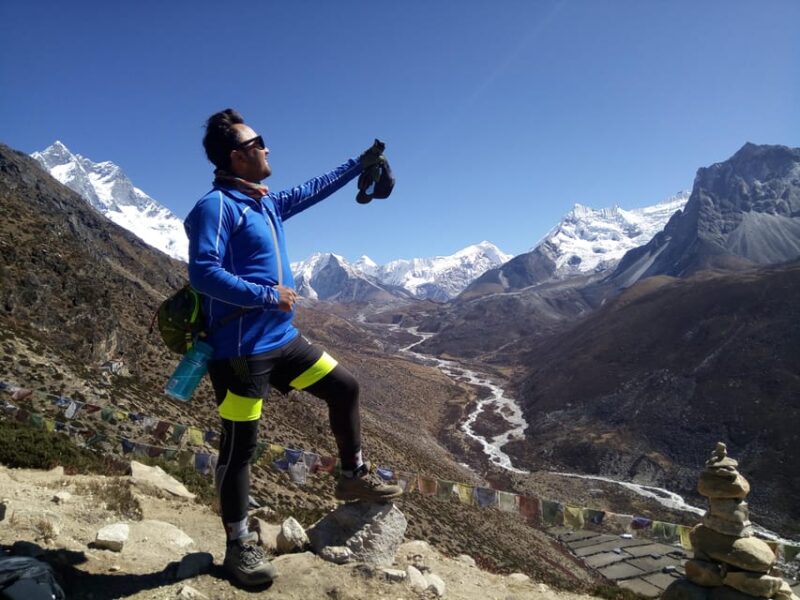
Departing from the bustling town of Lukla, trekkers embark on a journey that takes them through idyllic Sherpa villages adorned with vibrant prayer flags.
As the trek progresses, opportunities for acclimatization are provided in Namche Bazaar and Dingboche, allowing participants to adjust to the high altitude.
Along the way, trekkers engage with local communities, explore colorful markets, and visit serene monasteries, seeing the rich Tibetan-influenced culture.
The landscapes transform from lush forests to rugged, high-altitude terrain, offering a visually captivating experience as the trek ascends in elevation.
Gear and Equipment Provided
The Everest Base Camp trek package includes essential gear and equipment to ensure a comfortable and safe journey.
Participants will receive a high-quality sleeping bag and jacket to keep them warm during the cold nights in the Himalayas. The tour also provides a medical kit, complete with necessary supplies for minor injuries and altitude-related issues.
Plus, an oximeter is included to monitor oxygen levels, a crucial safety measure in the high-altitude environment.
These items, along with the guidance of an English-speaking mountain guide, help trekkers navigate the challenging terrain and adapt to the changing climate as they ascend towards Everest Base Camp.
More Great Thing To Do NearbyMeals and Accommodation During Trek
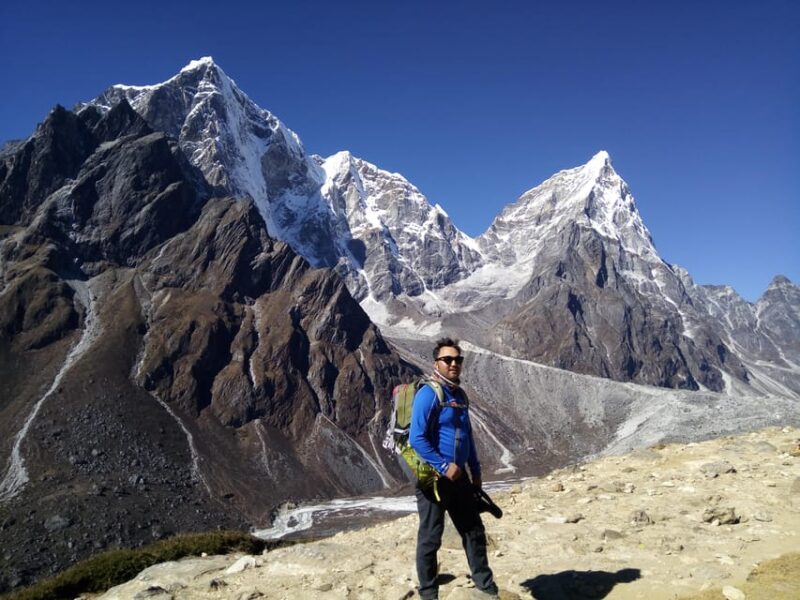
Hearty, home-cooked meals await trekkers during their journey to Everest Base Camp. Accommodation is provided in local guesthouses, offering a comfortable and authentic experience.
Meals are included throughout the trek, showcasing the region’s delicious Nepali and Tibetan cuisine. Expect a variety of dishes, from lentils and rice to momos (Tibetan dumplings) and yak dishes. Vegetarian options are also available.
Guesthouses provide basic but clean rooms, often with shared bathroom facilities. Hot showers may be available at some stops, but can be limited.
Trekkers should be prepared for basic living conditions as they ascend higher into the mountains.
Permits, Flights, and Rescue Assistance
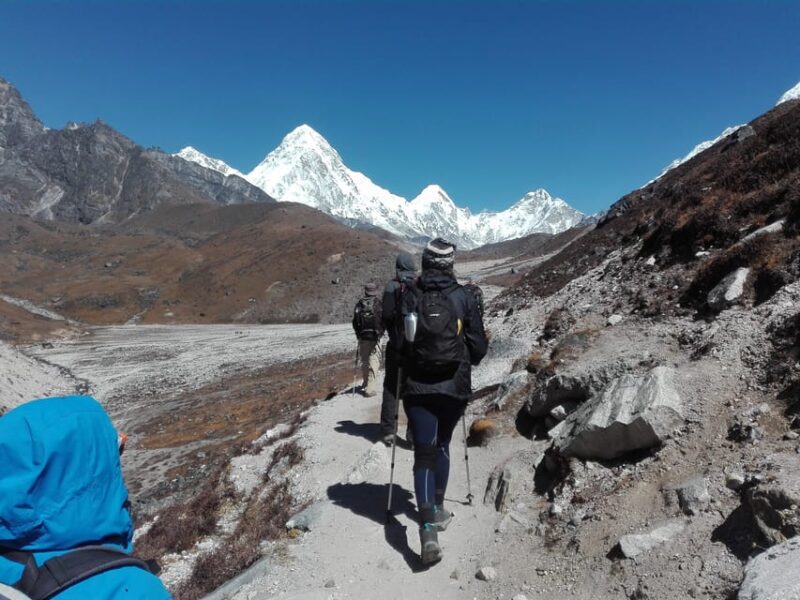
Trekkers can rest assured that all necessary permits, flights, and rescue assistance are taken care of as part of the Everest Base Camp trek package.
The package includes:
- Trekking permits required to access the national park and trek in the region.
- Domestic flights between Kathmandu and Lukla, which is the starting point of the trek.
- Comprehensive medical and rescue assistance, including access to an emergency helicopter if needed.
- All applicable government taxes and fees.
This ensures trekkers can focus on the adventure ahead without having to worry about the logistical details.
The included services provide peace of mind and allow for a seamless trekking experience.
Exclusions and Additional Expenses
Aside from the comprehensive inclusions, there are several additional expenses participants should account for when booking the Everest Base Camp trek.
International airfare to and from Nepal, as well as Nepal visa fees, aren’t covered. Travel insurance is also mandatory and must be secured independently.
Personal expenses like drinks, snacks, and laundry are the responsibility of each participant.
While tips for guides and porters are at the discretion of travelers, they’re customary.
Plus, any emergency evacuation costs and meals in Kathmandu are excluded from the package price.
Important Policies and Restrictions
The Everest Base Camp trek offers participants a range of important policies and restrictions to be aware of.
For starters, the trek provides free cancellation up to 24 hours in advance for a full refund, making it easier to plan. However, it’s not suitable for children under 5 or people over 70 years old.
Plus, certain items are prohibited, including:
- Alcohol and drugs
- Electric wheelchairs
- Bright colors and fireworks
- Walking barefoot
These restrictions ensure the safety and sustainability of the trek.
Participants should keep these guidelines in mind when preparing for their Everest Base Camp adventure.
Frequently Asked Questions
Can I Extend the Trek Duration Beyond 10 Days?
Yes, the trek duration can be extended beyond 10 days. Many tour operators offer longer Everest Base Camp treks, typically ranging from 12 to 16 days, allowing for more acclimatization and exploration along the way.
Is It Possible to Join the Group Midway Through the Trek?
Joining the group midway through the trek is generally not recommended, as it can disrupt the acclimatization process and group dynamics. However, it may be possible in some cases with prior coordination and additional costs.
How Much Do Tips for the Guides and Porters Typically Cost?
Tips for guides and porters typically range from $5 to $10 per participant per day, though the exact amount is at the discretion of the trekkers based on their satisfaction with the service provided.
Can I Bring My Own Specialized Trekking Equipment?
Yes, participants can bring their own specialized trekking equipment. The tour operator recommends checking with them first to ensure compatibility and suitability for the trek. Proper gear is essential for a safe and enjoyable high-altitude adventure.
Are There Any Age or Health Restrictions for Participation?
The trek has age and health restrictions. It’s not suitable for children under 5 or people over 70. Participants should be in good physical condition to handle the moderate to strenuous difficulty of the high-altitude adventure.
Recap
The Everest Base Camp Trek offers an unparalleled adventure, blending stunning natural beauty with immersive cultural experiences. Hikers will be awed by the majestic Himalayas, engage with local communities, and explore ancient sites, all while acclimatizing to high altitudes. With essential gear and hearty meals provided, trekkers can fully enjoy this once-in-a-lifetime journey to the base camp of the world’s highest peak.
You can check if your dates are available here:More Hiking & Trekking Tours in Namche Bazar
More Tour Reviews in Namche Bazar
Not for you? Here's more things to do in Namche Bazar we have recnetly reviewed
- 4 Best Tours In Namche Bazar
- 6 Best Helicopter Flights And Tours In Namche Bazar
- 8 Best Hiking And Trekking Tours In Namche Bazar
- Mt.Phari Lapcha Peak Climbing
- Mt.Kyazo Ri Peak Climbing
- Everest Base Camp Tour
- Everest Base Camp Trek 12 Days
- Everest Base Camp Trek With Helicopter Return
- Lobuche East Climbing
- Mt.ABI
- Ride Horse to Everest Base Camp
- Everest Three High Passes Trek: 17-Day Guided 3 Passes Trek
